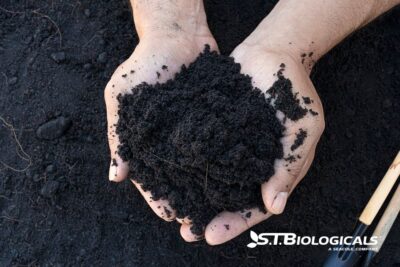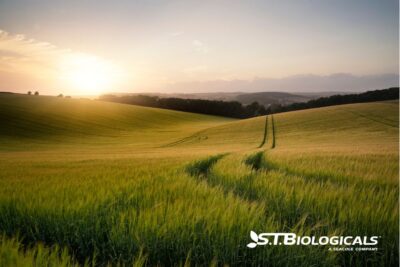Silage prep is a deceptively complex task that blends timing, biology, and logistics. Here’s a breakdown of the four main steps. If you’ve prepared any silage in the past, you know these are just the high points. Get in touch with our mentors to get in the weeds.
1. Choose the Right Crop and the Right Growth Stage
Almost any crop can be made into silage. The nutritional value of that crop determines its value as animal feed. Alfalfa, corn, sorghum, small grains, and certain grasses are common choices, and all depend on climate and your livestock’s needs.
Timing is everything when harvesting crops for silage. Your crop has to be at the peak of nutritional value (e.g., corn at the milk-dough stage, small grains no later than flag leave). As soon as you harvest, that biomass has to be chopped. The optimum chop size is about 5/8 inch. At this size, you can ensure proper compaction and fermentation.
2. Ensure You Have the Proper Infrastructure and Equipment
Some farmers use silage bunkers for storage. If you do, clean and inspect it for cracks or drainage issues. Whatever container you choose, it must be airtight.
If you’re using plastic sheeting, make sure you have enough to cover and seal the pile immediately after packing. Your machinery needs to be in top working order. Sharpen blades, check choppers, and coordinate with contractors if you are outsourcing the harvest.
3. Be Flexible for the Best Nutritional Value and Risk Management
Nature doesn’t follow your time schedule. Throughout the season, you’ve had to fertilize to maintain the nutritional quality of the finished product. Soil tests and plant tissue analysis help you determine what your plants need with precision.
Although creating high-nutrient silage requires fermentation, there are limits to the amount of moisture you want in your biomass.
Your crop may be too wet when you’re ready to cut. Plan for the unexpected. Putting up silage that is more than 70% moisture can cause severe problems, including:
● Clostridial Fermentation: Wet silage creates anaerobic conditions ideal for Clostridium bacteria, which produce butyric acid and degrade sugars and proteins into ammonia and biogenic amines.
● Low pH and Sugar Loss: Excess moisture dilutes fermentable sugars, leading to poor lactic acid production and unstable fermentation.
● High Dry Matter Losses: Wet silage often results in greater nutrient loss, reducing feed value and increasing effluent runoff.
Not only do you lose the nutritional quality of your silage, you also run the risk of making your cattle sick. Hemorrhagic bowel syndrome, listeriosis, and botulism are all linked to moldy silage.
4. Proper Packing and Sealing to Preserve Nutrients
Silage is livestock sauerkraut. As such, it needs many of the same precautions used in preparing a human food product. Both rely on lactic acid bacteria to convert plant sugars into lactic acid, which drops the pH and inhibits spoilage organisms. In silage, this preserves nutrients for livestock feed (and in sauerkraut, creates a tangy, shelf-stable food). Consider using a research proven inoculant to further aid in fermentation of the crop to minimize nutrient lose.
Silage is packed in thin layers (no more than a 6” layer) and compacted thoroughly to eliminate oxygen using the rule of 800 pounds of packing tractor weight for every one ton of silage delivered per hour packing in multiple directions when possible. When oxygen enters during poor packing, sealing, or feedout, it triggers aerobic spoilage.
Cover the pile, tower, bunker silo, or bags of silage immediately. Airtightness is key to proper packing and sealing for the highest nutritional value. Baleage is another option for some crops, but the bale must be wrapped quickly and sealed.
Silage is a very nutritious feed for your livestock, and it can be produced on your farm to save you money on hay, off-farm feed, and vet bills. When you start with healthy, nutrient-dense plants, you end up with more efficient fermentation and higher-quality silage. Good silage is also highly palatable to cattle.
When your livestock eat high-quality food, they produce high-quality manure. When you use that manure as a fertilizer source, you’re providing organic matter and nutrients back to the land that grew the organic material for your silage. It is a great closed-loop system that improves your land year-over-year.
To find out how silage can be a part of your overall farm plan, contact our team at ST Biologicals. We’re here to help you succeed. When soil speaks, we listen.

